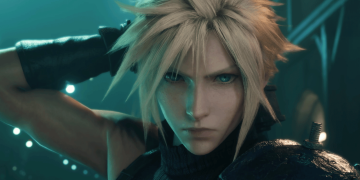Do you ever feel like gaming consoles have lost a bit of their magic these days? Personally, I do. There’s a certain charm that’s been missing, a lack of quirky, unexpected surprises. Sure, the Nintendo Switch stands out a bit, largely because of its hybrid design. But aside from its portability, it doesn’t drastically change the actual gameplay experience—it’s more about the flexibility of where you can play your games. That’s all well and good, and it’s definitely a unique Nintendo touch—innovative yet sometimes unconventional. But I can’t help but yearn for something more.
It’s amusing because Nintendo actually captured the essence of what I’m looking for two decades ago with the DS. What an incredible piece of technology that was! I remember seeing it for the first time as a kid and feeling certain it was something extraordinary. And it’s not just me—by the end of its production run, it became the second best-selling console ever, resonating with countless others.
If you didn’t know, DS stands for “dual screens,” a concept Nintendo had played with before, thanks to their Game & Watch devices. This innovation highlighted Nintendo’s knack for staying ahead of the curve. The DS boasted far more power than the Game & Watch or even the Game Boy Advance, paving the way for bigger and bolder games. But it was the second screen that stirred curiosity and excitement.
That additional screen unlocked entirely new gameplay possibilities, amplified by its touchscreen capabilities. Take Mario & Luigi: Partners in Time, for example—a brilliant sequel to its Game Boy Advance predecessor. It ingeniously allowed players to use both screens to manage adult and baby versions of Mario and Luigi, offering creative puzzles that were simple yet clever.
Then there’s The World Ends With You, which had players battling on both screens using two characters simultaneously, requiring synchronization for effectiveness against enemies. Hotel Dusk transformed the DS into a portrait-mode device, mimicking a book-like quality perfect for its narrative-heavy gameplay. Even for something like Pokémon, migrating the UI to the bottom screen allowed for a more exhilarating and expansive experience.
Some of these games came into my life later on, but collectively, they shifted my perspective on gaming. They redefined not just what games could be but how we could engage with them. This dual-screen interface brought an unmatched level of immersion, making you feel an integral part of the action. It created an illusion of bigger worlds with more to explore, a feeling unmatched by consoles since.
To me, the DS represented games as dedicated, often playful spaces. It might have gone unnoticed in my younger days, but it certainly shaped my perception of game interaction. In a time when consoles and controllers have become somewhat uniform—streamlined towards quick game launches rather than intriguing interfaces—it feels more challenging to find that same sense of wonder.
Though my original DS now gets less playtime than my 3DS, it’s lovely to know that same playful spirit still influences my gaming preferences today. It’s intriguing that even after 20 years, this console left such a lasting impact, forever a testament to being one of the greatest handhelds we’ve ever seen.










![[Review] Lost Records: Bloom and Rage – Tape 2 for PS5 [Review] Lost Records: Bloom and Rage – Tape 2 for PS5](https://www.8bitnewsroom.com/wp-content/uploads/2025/05/Review-Lost-Records-Bloom-and-Rage-–-Tape-2-for-360x180.jpg)




































